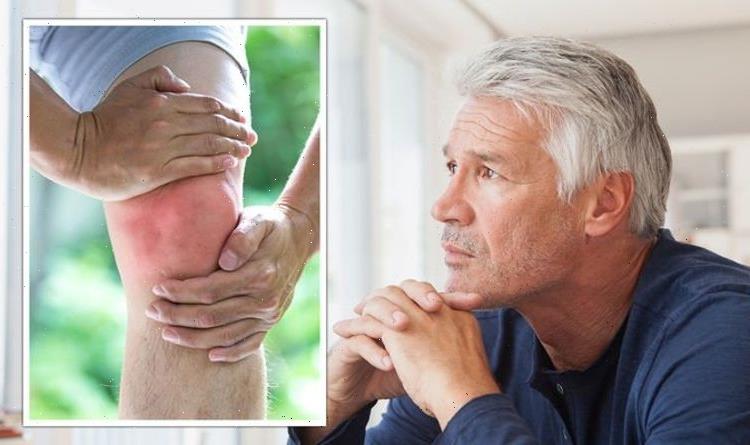Osteoarthritis: Elaine reveals her experience of the condition
We use your sign-up to provide content in ways you’ve consented to and to improve our understanding of you. This may include adverts from us and 3rd parties based on our understanding. You can unsubscribe at any time. More info
Speaking exclusively to Express.co.uk, Professor Paul Lee – a sports and orthopaedic surgeon – warned that “deep squats with weights are not recommended as this exercise can exert too much pressure on the knee cap”. Moreover, deep squats with weights could potentially overload the hard cartilage, known as the meniscus. “Also, avoid downhill running if possible,” added Lee. “The impact to the knee is four times greater compared to running uphill.”
This is because when running downhill, you are travelling in the same direction as the gravitational force of gravity.
While jogging is considered “good for your knees”, overdoing it can cause some issues.
“We tend to find that it’s most often joggers and sportspeople who come to us with knee problems,” said Lee.
“Causes can depend on many factors but are usually down to footwear and over training.

“The most common issues are related to damage to the soft tissue around the lining or tendons of the knee, whereas any problem with the knee bone itself is unusual.”
In order to prevent knee damage from jogging, as well as wearing the correct footwear, Lee recommends to “limit your running on hard surfaces”.
Lee elaborated: “Many trainers believe that 60-70 percent of running should take place instead on dirt tracks or grass.
“The ground is more forgiving so there is less wear and tear on the joints.”
If arthritis is developing in the knee, Lee pointed out that it “usually begins with a meniscus tear, triggering irritation and swelling”.
As a result, this will cause a “very sharp, deep pain at the back of the knee joint”.
Lee explained: “It changes the dynamics of the motion of the knee, causing unusual loading to the cartilage and, in some cases, will then progress to bone damage and arthritis.”
Lee added: “If you have already been diagnosed with arthritis in the knee, you will be advised that cycling, swimming and walking through water is the best form of exercise to alleviate painful symptoms.”

Experts from the American Academy of Orthopaedic Surgeons pointed out that arthritis symptoms include: pain, swelling and stiffness.
Known to be “particularly common” in the knee joint, the condition can cause difficulty with everyday life, such as climbing stairs.
“It is a major cause of lost work time and a serious disability for many people,” the experts stated.
Osteoarthritis in the knee involves the cartilage gradually wear away, becoming frayed and rough.

As the protective space between the bones decreases, the bones can rub against one another and produce painful bone spurs.
The condition is known to develop slowly, causing more and more pain as time goes on.
If you notice that your knee is starting to hurt, speak to your doctor about pain management.
Professor Paul Lee is a sports and orthopaedic surgeon at MSK Doctors.
Source: Read Full Article
